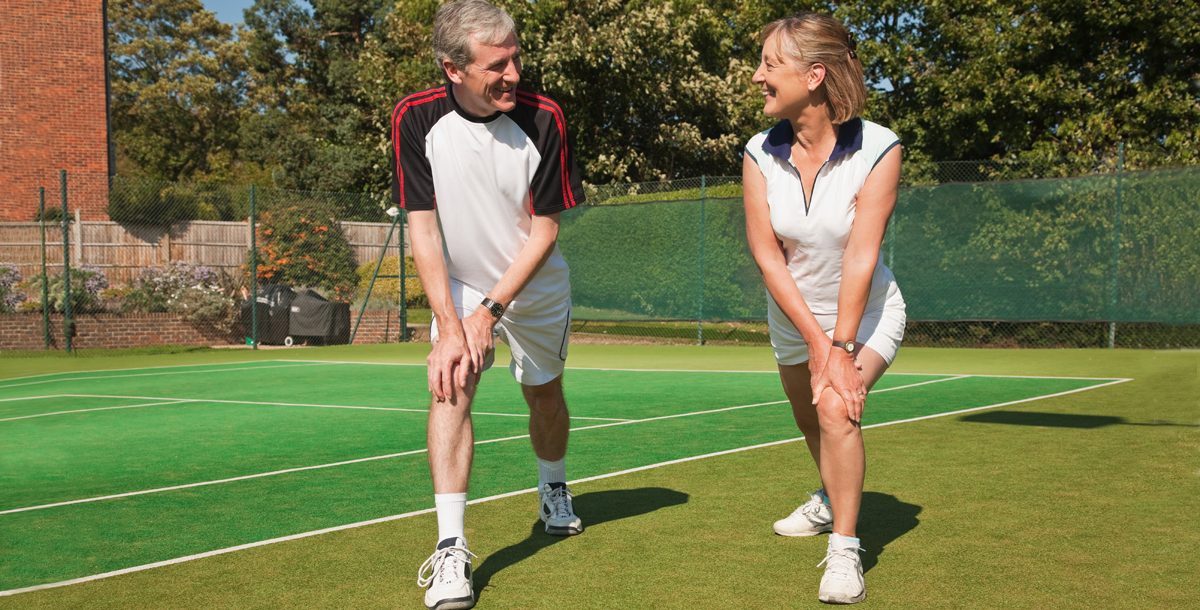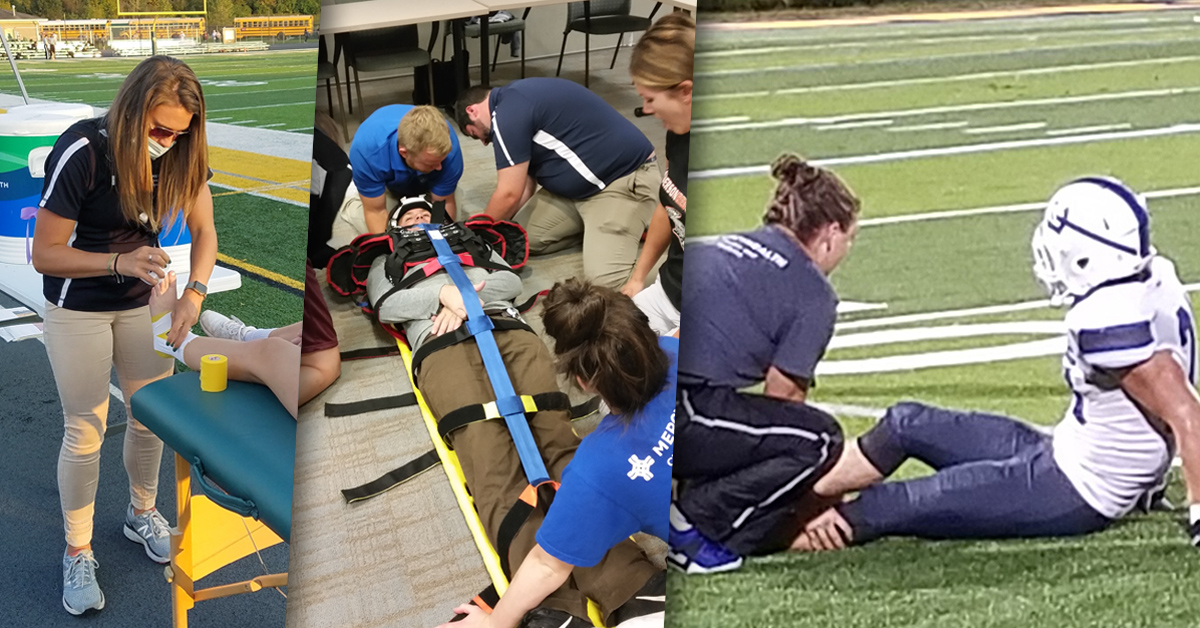Before picking up a racquet, be sure to educate yourself with these tennis injury prevention tips.
The benefits of playing tennis go well beyond increasing your hand-eye coordination, strengthening your muscles, and increasing your overall aerobic capacity. Playing tennis regularly, even at a recreational level, can also improve brain function, reduce stress, and provide a social outlet, no matter your age.
Mercy Health Orthopedic Surgeon, Samer Hasan, MD, PhD, personally knows the benefits of tennis. Dr. Hasan first picked up a racquet at the age eight and continues play a couple times a week. We asked Dr. Hasan to lob a few “soft balls” to us and explain some of the injuries that are common with tennis players.
Because tennis involves a lot of repetitive motions, overuse injuries often occur. Here’s what you need to know about several common overuse injuries:
- Tennis Elbow
- Doctor Talk: Lateral Epicondylitis, a form of chronic tendinitis
- What is it: the degeneration of the extensor tendons that connect a group of forearm muscles to the outside of your elbow
- Causes: usually due to overuse, this muscle is used most when the ball hits the tennis racquet
- Symptoms: pain on the outside of your elbow, especially when straightening the elbow, and weakened grip strength
- Golfer’s Elbow
- Doctor Talk: Medial Epicondylitis, a form of tendinitis
- What is it: the degeneration of the flexor tendons that connect a group of forearm muscles to the inside of your elbow
- Causes: usually due to overuse from backhand strokes or generating a lot of topspin
- Symptoms: pain on the inner elbow/forearm, weakened grip strength, numbness/tingling typically limited to the ring and little fingers
- Rotator Cuff Injuries
- Doctor Talk: Rotator Cuff Tendinitis, Rotator Cuff Bursitis, Rotator Cuff Tear
- What is it: Your rotator cuff is a group of four muscles and tendons that help stabilize your shoulder. When these rotator cuff muscles and tendons are fatigued or weak, they get irritated and cause inflammation. Additionally, the rotator cuff tendons can tear over time. They can also tear as a result of sudden trauma, resulting in pain and weakness.
- Causes: usually due to overuse, your overhead serve can be taxing on your rotator cuff tendons
- Symptoms: shoulder pain, weakness, and difficulty/inability to achieve a full range of shoulder motion
- Stress Fractures
- Doctor Talk: Back Stress Fracture, Tibia or Fibula Stress Fractures, Navicular or Metatarsal Stress Fracture
- What is it: A tiny, hairline crack in your bones or vertebrae. When your muscles get tired, more stress is placed on your bone. If this happens rapidly, your bone might not be able to adjust quickly enough to accommodate the stress, causing a fracture.
- Causes: usually due to overuse, especially as a result of increasing your training too quickly
- Symptoms: pain, tenderness and swelling that might get worse over time, but often fade with rest
- Muscle Strains and Sprains
- Doctor Talk: Wrist Strain, Knee Strain, Shoulder Sprain, Ankle Sprain
- What is it: stretching out or damaging ligaments around a joint
- Causes: usually caused by quick sudden moves from changing directions or reacting to your opponent’s shot
- Symptoms: pain, stiffness, and swelling; instability in the affected joint; bruising
Decrease the likelihood of experiencing these overuse injuries with proper tennis playing preparation. Here are a few tips to help you play safe:
- Strengthen your muscles: This includes not only the muscles you’re directly using, but those around them too. For example, to serve the ball, it isn’t just your shoulder and arm working. Your thighs, back, and core are all incredibly important to produce the energy needed to generate a high-velocity serve.
- Build upon your endurance training: It is important to ease into the sport and not overextend yourself.
- Warm-ups and stretching: Do these for at least 10 to 15 minutes prior to playing. Your warm-up could include some aerobic exercises like a slow jog or jumping jacks. For stretching, be sure to hold them for 30 seconds or longer and don’t bounce. Moving, swinging stretches are also helpful to get you ready to play.
- Cool Down: Give yourself a minimum of five minutes to cool down and stretch after playing.
- Make sure you have the right equipment:
- Shoes – your tennis shoes should provide good support to help prevent ankle injuries or stress fractures in your leg and foot
- Socks – to increase support for your ankles, wear two pairs or get special tennis socks with extra padding
- Racket – ensuring you have the correct grip size, string tension, racquet size, and weight can reduce stress on your elbow and shoulder
- Take breaks and stay hydrated.
- Inspect the courts for slippery spots and remove any debris before playing.
If you do experience an overuse injury, it is important to rest, ice, apply compression and elevate the injury. Use anti-inflammatory medication or strengthening exercises to help as well.
If these action items do not seem to help your injury, it is time to see a doctor.
Learn more and schedule an appointment with a sports medicine or orthopedic specialist today at Mercy.com.






